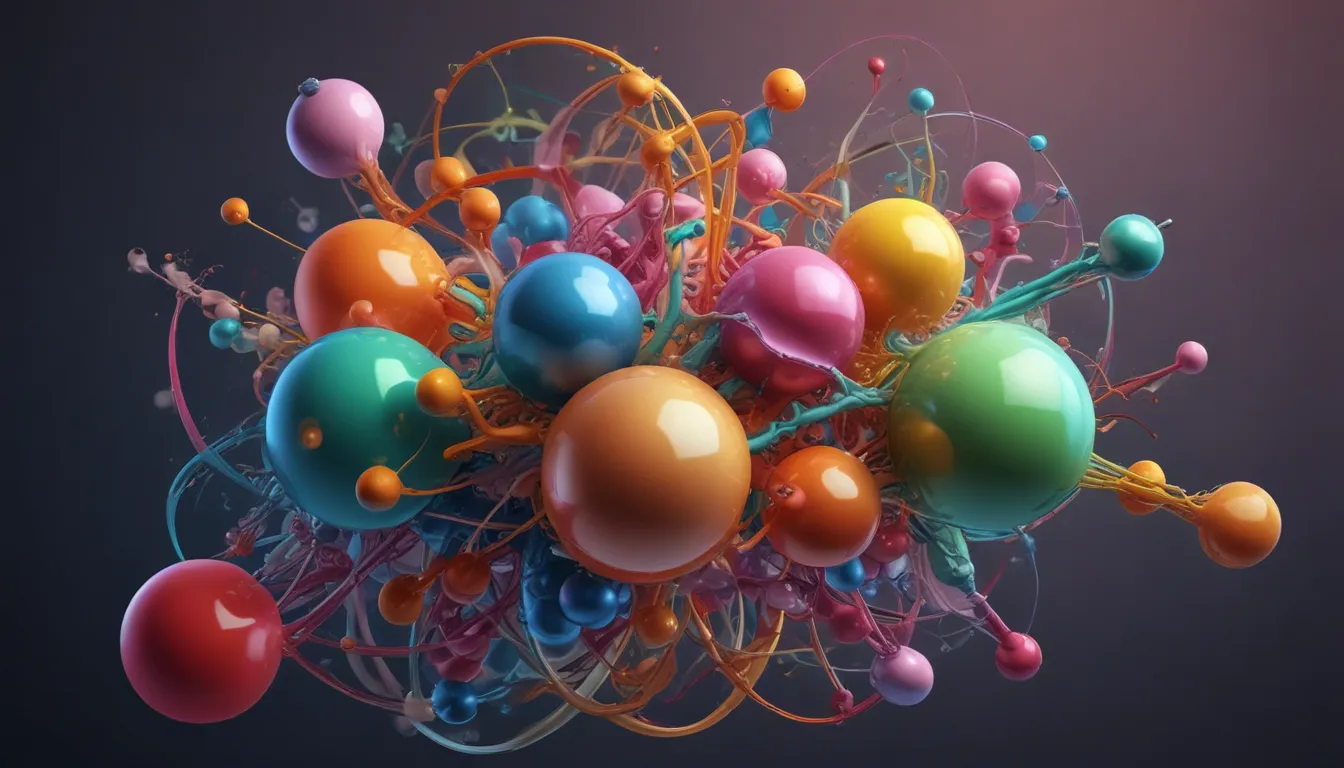A Note About Images: The images used in our articles are for illustration purposes only and may not exactly match the content. They are meant to engage readers, but the text should be relied upon for accurate information.
Welcome to the world of hybrid orbitals, a captivating concept in chemistry that unveils the mysteries of molecular bonding and structure. These unique molecular orbitals are like special shapes that atoms create when they join together, influencing everything from the shape and properties of molecules to the diversity of substances we see in the world around us. In this article, we will delve into 16 unbelievable facts about hybrid orbitals, shedding light on their significance and versatility in the realm of chemistry.
Uncovering the Magic of Hybrid Orbitals
-
Formed through Atomic Orbital Combination: When different atomic orbitals mix together, hybrid orbitals are born, offering new shapes and energy levels that enable atoms to bond in molecules.
-
Exhibiting Unique Geometries: Hybrid orbitals take on different shapes based on the type of hybridization, such as sp, sp2, sp3, and sp3d, which dictate the molecular shape and atom arrangement.
-
Influencing Molecular Bond Angles: The hybridization of orbitals plays a pivotal role in determining the angles between bonds in a molecule, crucial for understanding the structure and properties of organic compounds.
-
Facilitating Efficient Orbital Overlapping: Hybrid orbitals allow atoms in a molecule to effectively overlap their orbitals, creating strong chemical bonds vital for compound stability and reactivity.
-
Abundant in Carbon Compounds: Carbon readily forms hybrid orbitals, leading to diverse bonding arrangements and structures in carbon-based compounds, showcasing the versatility of this element.
-
Enabling Double and Triple Bonds: Through hybridization, atoms can create hybrid orbitals capable of engaging in multiple bond formations, including double and triple bonds essential for chemical reactions diversity.
-
Enhancing Molecule Stability: Hybrid orbitals optimize electron arrangement, minimizing electron repulsion to stabilize molecules with symmetric structures, showcasing their role in molecular stability.
-
Foundation in Valence Bond Theory: Hybrid orbitals are intricately linked to the valence bond theory, describing chemical bond formation through atomic orbital overlap, providing valuable insights into bonding mechanisms.
-
Expanding Beyond Carbon: While carbon is a primary example of hybridization, other elements like nitrogen, oxygen, and sulfur can also undergo hybridization, adapting to specific bonding requirements in various compounds.
-
Offering Unique Electronic Configurations: By merging atomic orbitals, hybrid orbitals present distinct electronic configurations that impact the chemical reactivity and behavior of molecules, shaping their properties.
Exploring the Impact of Hybrid Orbitals
-
Influencing Pi Bonding: The type of hybrid orbitals in a molecule influences the presence and strength of pi bonding, pivotal for the stability and properties of conjugated systems.
-
Revolutionizing Chemical Bonding Understanding: The introduction of hybrid orbitals revolutionized chemical bonding concepts, shedding light on previously unexplained phenomena and providing a fresh perspective on bond nature.
-
Forming Delocalized Electrons: In specific compounds, hybrid orbitals can result in delocalized electrons, offering unique electronic properties that contribute to materials like graphene’s conductivity.
-
Affecting Molecule Acidity and Basicity: The type of hybridization and atom arrangement in a molecule impact its acidity and basicity, influencing chemical reactions and compound behavior in solutions.
-
Cornerstone of Organic Chemistry: Hybrid orbitals play a fundamental role in organic chemistry, elucidating the bonding and behavior of carbon-based compounds essential to life and various industrial applications.
-
Applications Across Scientific Fields: Hybrid orbital theory finds practical applications in scientific fields like pharmaceuticals, materials science, and molecular biology, aiding in molecular structure understanding and new material design.
The Fascination Continues with Hybrid Orbitals
Through the exploration of these dazzling facts about hybrid orbitals, we uncover the intricate world of molecular bonding, structure, and reactivity. Whether you are a budding student delving into the intricacies of chemistry or a curious mind fascinated by the wonders of science, the realm of hybrid orbitals offers a captivating journey of discovery. By understanding hybrid orbitals, scientists gain valuable insights into the complexities of chemical reactions, molecular shapes, and compound behavior, paving the way for further research and innovation in the field of chemistry.
FAQs About Hybrid Orbitals
Q: What are hybrid orbitals?
A: Hybrid orbitals are formed through the combination of atomic orbitals, resulting in unique molecular shapes that influence bonding capabilities and molecular geometry.
Q: How are hybrid orbitals classified?
A: Hybrid orbitals are classified based on the type of mixing involved, with common examples including sp, sp2, and sp3 orbitals.
Q: What is the significance of hybrid orbitals?
A: Hybrid orbitals provide a deeper understanding of molecular structure, bonding mechanisms, and compound behavior, shaping the properties of molecules.
Q: How do hybrid orbitals impact molecular shape?
A: Hybrid orbitals determine molecular shape by organizing atoms and bonds around the central atom, influencing the overall structure of the molecule.
Q: Can you provide examples of molecules with hybrid orbitals?
A: Molecules like methane (CH4), ethene (C2H4), and ethyne (C2H2) exhibit hybrid orbitals with sp3, sp2, and sp hybridizations respectively.
Q: How do hybrid orbitals explain double and triple bond formation?
A: Hybrid orbitals enable the creation of double and triple bonds by facilitating orbital overlap and electron sharing in these types of bonds.
Q: What are potential research areas related to hybrid orbitals?
A: Future research areas may focus on exploring diverse hybridization types, investigating hybridization effects on molecular reactivity, and understanding hybrid orbitals in complex molecular systems.
Dive Deeper into the World of Hybrid Orbitals
As we unravel the enchanting realm of hybrid orbitals, each fact uncovers a new layer of complexity and wonder in the field of chemistry. The fusion of atomic orbitals to form hybrid orbitals revolutionizes our understanding of molecular bonding, structure determination, and compound reactivity. With each discovery, we unlock the secrets of chemical phenomena, paving the way for innovative advancements and groundbreaking revelations in the vast domain of chemistry.
At the intersection of science and fascination lies the captivating world of hybrid orbitals, inviting you to explore, learn, and be inspired by the awe-inspiring intricacies of the atomic realm. Let the magic of hybrid orbitals guide you on a journey of discovery and learning as you delve into the depths of molecular structure and bonding complexities.
Unravel the mysteries of hybrid orbitals, and embark on a fascinating exploration into the heart of chemistry’s most captivating concepts. Journey with us as we delve deeper into the wonders of hybrid orbitals, illuminating the path to understanding and discovery in the ever-evolving world of science.





